Yesan Hwaamsa Temple (화암사 (예산)
13.9 Km 7473 2020-04-04
21-29, Yonggung 1-gil, Yesan-gun, Chungcheongnam-do
+82-41-332-9250
Hwaamsa Temple is located near Joseon dynasty's scholar and writer Kim Jeong-hui's, also referred to his pen name Chusa, house. The temple has ties with the ancient writer, as the temple is known to have been repaired and renovated by Kim Jeong-hui's great grandfather. There are no records that explains the foundation of Hwaamsa Temple, and only a timeline of its reconstruction can be found in "Records of Hwaamsa Temple Restoration" plaque, which is displayed in Sudeoksa Temple Museum. The timeline was recorded by Kim Myeong-hee in 1848, and written by Kim Seong-hee, and carved by Cho Seok-shin. The name "Hwaamsa" was given by King Yeongjo (r. 1724-1776).
Myeoncheoneupseong Walled Town, Dangjin (당진면천읍성)
13.9 Km 24044 2023-07-17
14 Mongsan-gil, Dangjin-si, Chungcheongnam-do
Since the ancient days, the city of Dangjin was where an important sea route to China existed along with Seosan and Taean. Not only was it an essential trading post with China, it was also a critical military hub. Myeoncheoneupseong Walled Town is widely known to have been constructed in the 16th year of King Chungnyeol's reign in the Goryeo Dynasty (1290) but many believe that it had actually existed ever since the early Baekje period for the purpose of stopping foreign invasions. Myeoncheoneupseong was a fortress that had four main gates in the east, west, south and north.
House and Tomb of Kim Jeong-hui (추사김정희선생고택·묘)
14.1 Km 20028 2024-02-21
261, Chusagotaek-ro, Sinam-myeon, Yesan-gun, Chungcheongnam-do
This house and tomb are where Kim Jeong-hui (pen name: Chusa, 1786-1856), a Joseon-era scholar and artist, lived and was laid to rest. Chusa Memorial Hall and Chusa Experience Center are found next to the house. After studying in Qing China, Kim Jeong-hui served in multiple government posts. He is best known for his unique calligraphical style, which bears his courtesy name (Chusa), and many works of art that survive to this day. The Experience Center offers traditional art experiences inspired by Kim Jeong-hui’s works.
House of Chusa (추사고택)
14.2 Km 14764 2022-12-28
261, Chusagotaek-ro, Yesan-gun, Chungcheongnam-do
+82-41-339-8248
House of Chusa, Chusa Gotaek in Korean, is the traditional Korean house of the renowned scholar and calligrapher Chusa, also known as Kim Jeong-hui. This old house is known to have been constructed by the great-grandfather of Chusa, Kim Han-Sin.
The Korean-style house compound (266.11 m²) consists of munganchae (a guesthouse), soseuldaemun (a high gate), sarangchae (ㄱ-shaped men's quarters), anchae (ㅁ-shaped women’s quarters) and a shrine where the remains of Chusa are enshrined. Theㄱ-shaped Sarangchae stretches for one kan (traditional measuring unit) to the south and 2 kans to the east and is comprised of two rooms and a daecheongmaru (living area). The Anchae consists of a six-kan daecheongmaru and two one-kan rooms.
Located on the ground is a tomb where Chusa’s great-grandfather (Kim Han-Sin) and his wife (Hwasun Princess) are buried. Nearby, visitors will see a gate that was constructed to commemorate Princess Hwasun’s faithfulness to her husband.
Located approximately 600 meters to the north of the old house is a lacebark pine tree, which was designated as a Natural Monument. The lacebark pine tree, originally from northern China, is among the few of its kind in Korea. It is said that Chusa snuck the pine across the border from China (formerly, the Qing dynasty) into the country when he was 25 years old and planted it at the tomb of his great-grandfather. Originally, the tree had three branches, but two were broken and the third branch was damaged. In 1980, the damaged branch was treated and since then, the tree has been kept under strong protection.
Hongseong Gujeoram Hermitage (구절암(홍성))
14.2 Km 20050 2024-01-18
163 Geobuk-ro 218beon-gil, Guhang-myeon, Hongseong-gun, Chungcheongnam-do
Gujeoram Hermitage is located within a bamboo forest on a small mountain. The pathway is winding, without any signs marking the way, but this adds to the charm.
Yedangho Suspension Bridge & Musical Fountain (예당호 출렁다리(음악분수))
14.6 Km 359 2021-02-10
161, Yedanggwangwang-ro, Yesan-gun, Chungcheongnam-do
+82-41-339-8282
Yedangho Suspension Bridge opened on April 6, 2019 as the longest suspension bridge in Korea with the length of 402 meters. With the addition of Slow Lake Road in October of the same year, visitors can now enjoy the beautiful scenery even more. There is a sculpture park around the lake, standing in harmony with the white suspension bridge.
A grand musical fountain was installed on April 25, 2020. The fountain is the widest in the nation, and shoots jets of water up 110 meters into the air. The fountain show lasts for 20 minutes, and uses bightly colored LED lights for an exciting performance.
Yedang Reservoir (예당저수지(예당관광지))
15.3 Km 27858 2024-06-04
Deungchon-ri, Eungbong-myeon, Yesan-gun, Chungcheongnam-do
+82-41-339-8285
Yedang Reservoir is a popular attraction that represents Yesan in Chungcheongnam-do. Main facilities include a monorail, suspension bridge, sculpture park, and campground, as well as restaurants, accommodations, and convenience facilities. There are also various themed walking trail and parking lots. Many people visit to see the Golden Tree, a tree that takes on a golden hue at sunset.
Daeheung Dongheon (대흥동헌)
15.5 Km 3953 2021-05-25
33, Uijoeunhyeongje-gil, Yesan-gun, Chungcheongnam-do
+82-41-339-7332
"Dongheon" refers to the administrative building or headquarters for the top city official of the Joseon dynasty. This tile-roofed house measures six kan (traditional Korean measuring unit), or approximately 14.4 meters, on the front, two kan (4.8 meters) on the side and is 3.3 meters in x_height. Records carved on its gate show that the wooden house was constructed in 1407. The house, which is characteristic of late Joseon dynasty architecture, was once used as Daeheung-myeon office, but was dismantled and restored to its original appearance in 1979.
Bongsusan Recreational Forest (봉수산 자연휴양림)
15.6 Km 21081 2014-12-20
153, Imjonseong-gil, Daeheung-myeon, Yesan-gun, Chungcheongnam-do
+82-41-339-8936~8
Opened in 2007, the Bongsusan Mountain Natural Recreation Forest offers a variety of forest recreation facilities. The area is home to various wild birds. The forest also offers various hiking trails, which take between one and three hours to complete. The slopes are relatively gentle. Various rest and forest bathing sites are setup throughout the forest. The Yedang Reservoir is nearby, which is the nation’s top fishing ground. Also in the area is the Hyeongje (Brother) Park, Daeheung Dongheon, Daeryeonsa Temple, Imjonseong Fortress, Deoksan Hot Spring, Sudeoksa Temple, Chunguisa Temple, the residence of Chusa Kim Jung-hee, and the Korea Traditional Architecture Museum.
Hapdeokje Reservoir (합덕제)
15.7 Km 0 2023-07-17
395 Hapdeok-ri, Hapdeok-eup, Dangjin-si, Chungcheongnam-do
Hapdeokje is a reservoir located in Dangjin, Chungcheongnam-do. Designated as a Chungcheongnam-do Monument in 1989, it is known to have been built in the late Unified Silla period for the irrigation of Yedang Plain (Sodeulgangmun Gate). It attracts many tourists in spring with cherry blossoms and canola flower blossoms and in summer with lotus flowers in full bloom. The Hapdeokje Ecotourism Experience Center (opened in 2021) and Hapdeok Folk Irrigation Museum are located nearby, so you can stop by when traveling in the area.

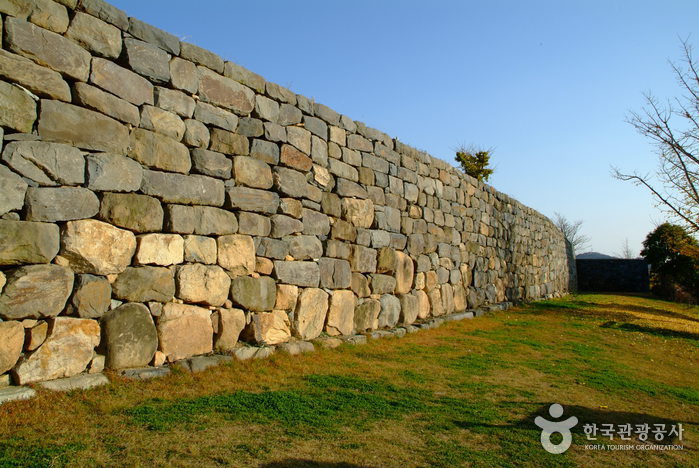
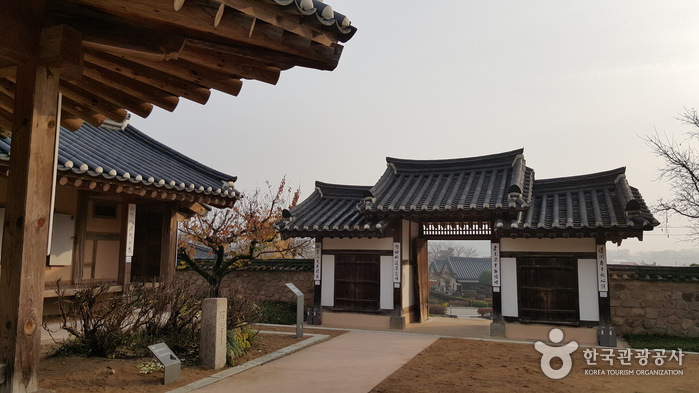
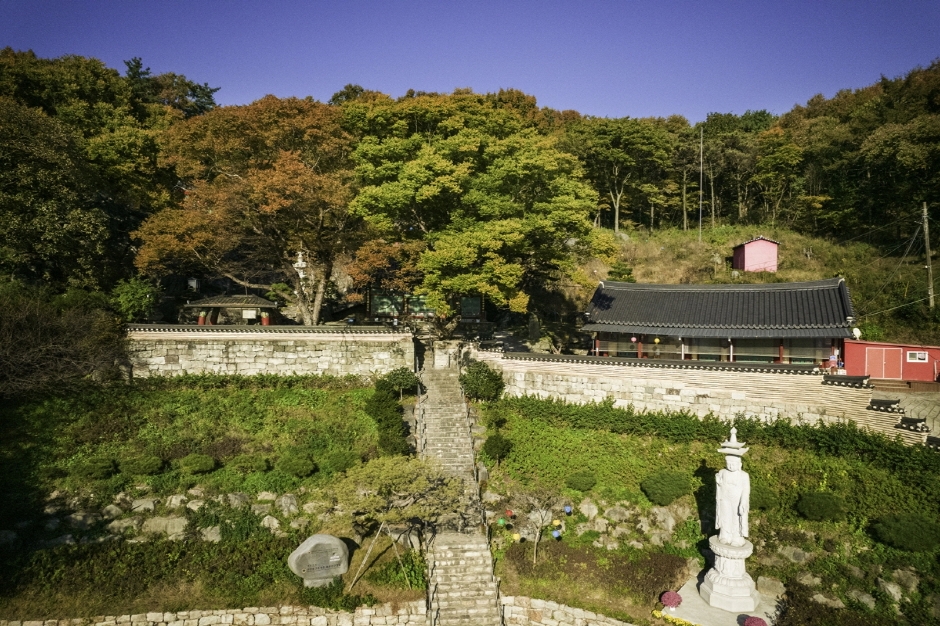
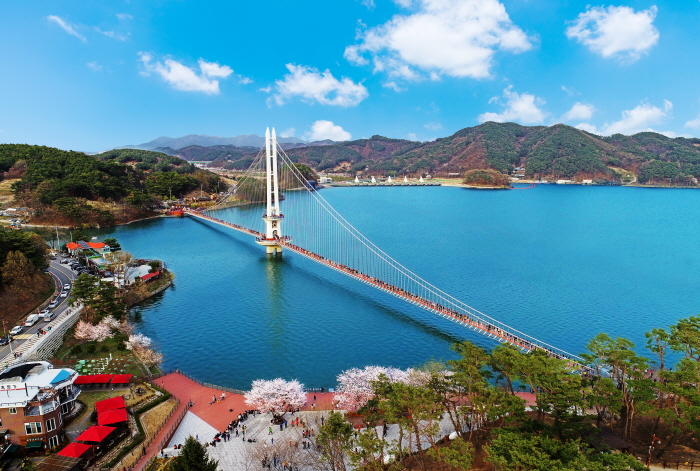
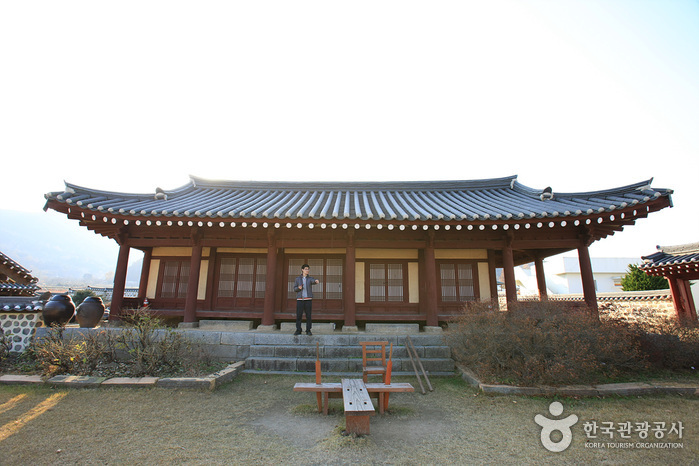
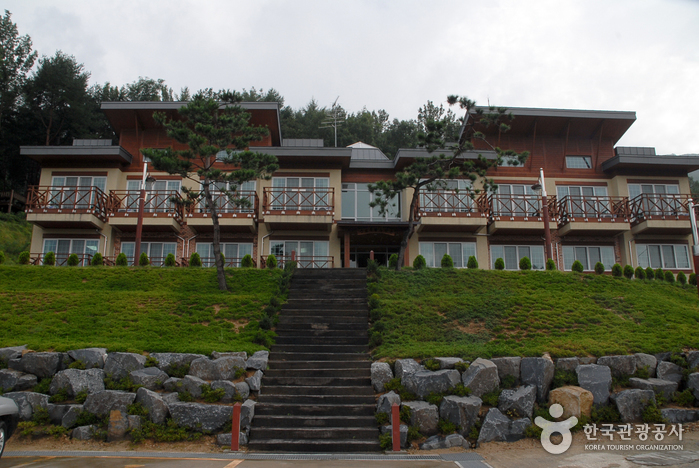
 English
English
 한국어
한국어 日本語
日本語 中文(简体)
中文(简体) Deutsch
Deutsch Français
Français Español
Español Русский
Русский